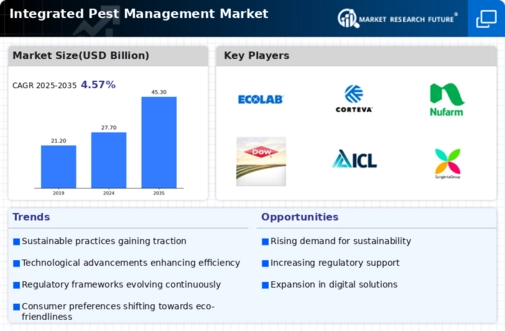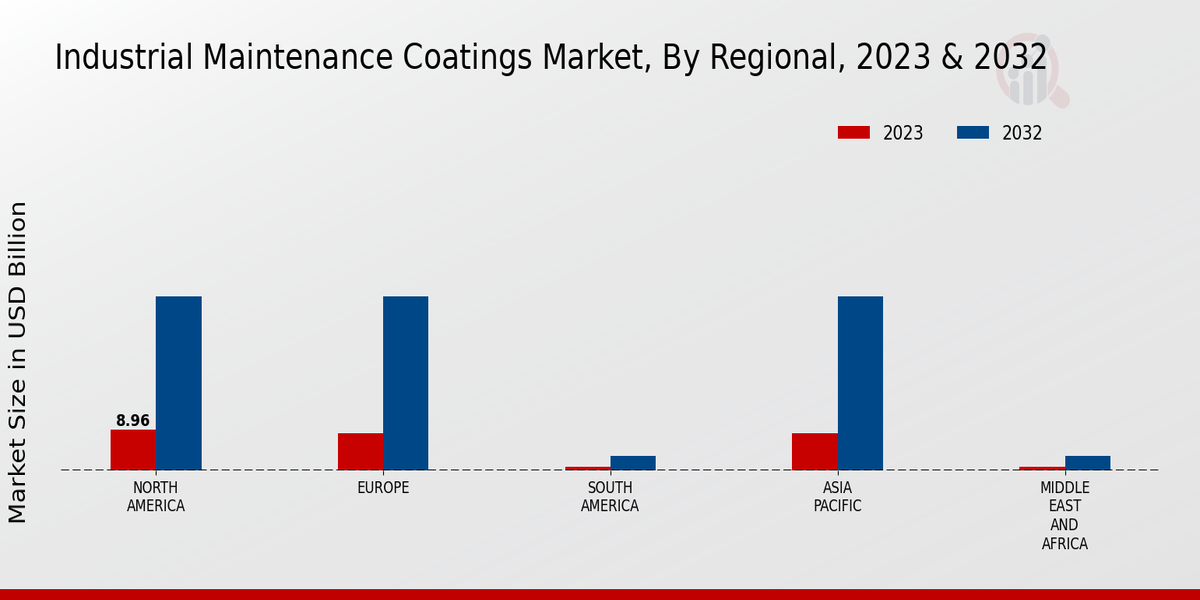Market Growth Projections
The Global Integrated Pest Management Market Industry is projected to experience substantial growth over the coming decade. With a market size anticipated to reach 27.7 USD Billion in 2024 and further expand to 45.3 USD Billion by 2035, the industry is poised for a robust trajectory. The expected CAGR of 4.57% from 2025 to 2035 indicates a steady increase in demand for integrated pest management solutions. This growth is driven by various factors, including technological advancements, regulatory support, and the increasing need for sustainable agricultural practices. The market's expansion reflects the evolving landscape of pest management in response to global agricultural demands.
Government Regulations and Support
Government regulations aimed at promoting sustainable agriculture significantly influence the Global Integrated Pest Management Market Industry. Many countries are implementing policies that encourage the adoption of integrated pest management practices, providing financial incentives and support for farmers. These initiatives aim to reduce the environmental impact of traditional pest control methods. As a result, the market is expected to expand, with estimates suggesting a growth to 45.3 USD Billion by 2035. Such regulatory frameworks not only enhance market stability but also foster innovation in pest management solutions.
Increasing Awareness of Pest Resistance
The growing awareness of pest resistance issues is driving the Global Integrated Pest Management Market Industry. Farmers are increasingly recognizing the limitations of conventional pesticides, which can lead to resistant pest populations. This awareness prompts a shift towards integrated pest management strategies that combine biological, cultural, and chemical controls to mitigate resistance. Consequently, the market is likely to see sustained growth as farmers seek effective solutions to combat resistant pests. The emphasis on education and training in pest management practices further supports this trend, enhancing overall agricultural productivity.
Rising Demand for Sustainable Practices
The Global Integrated Pest Management Market Industry is experiencing a notable shift towards sustainable agricultural practices. As consumers increasingly prefer organic and sustainably sourced products, farmers are compelled to adopt integrated pest management strategies that minimize chemical usage. This trend is expected to drive the market's growth, with projections indicating a market size of 27.7 USD Billion in 2024. The emphasis on environmental stewardship aligns with global initiatives aimed at reducing pesticide dependency, thereby fostering a more sustainable agricultural ecosystem.
Global Population Growth and Food Security
The Global Integrated Pest Management Market Industry is significantly influenced by the increasing global population and the corresponding demand for food security. As the world population continues to rise, projected to reach 9.7 billion by 2050, the pressure on agricultural systems intensifies. Integrated pest management offers a viable solution to enhance crop yields while minimizing environmental impact. This necessity for sustainable food production is expected to drive market growth, with the industry projected to reach 27.7 USD Billion in 2024. The focus on food security underscores the importance of effective pest management strategies in meeting future agricultural challenges.
Technological Advancements in Pest Control
Technological innovations play a pivotal role in shaping the Global Integrated Pest Management Market Industry. The advent of precision agriculture, including the use of drones and IoT devices, enhances pest monitoring and control efficiency. These technologies enable farmers to apply pest management solutions more accurately, reducing waste and improving crop yields. As a result, the market is poised for growth, with a projected CAGR of 4.57% from 2025 to 2035. This technological evolution not only increases productivity but also aligns with the growing demand for environmentally friendly pest control solutions.























